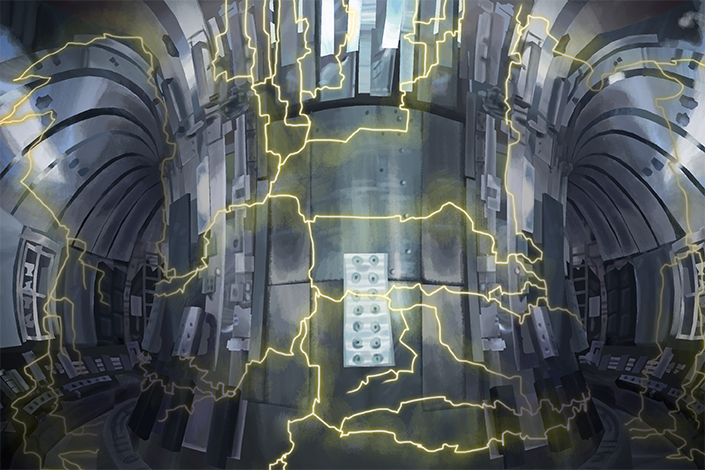Channeling helium: A&M researchers take next step toward fusion energy

Image: Research Communications and Public Relations
Fusion is the process that powers the sun and harnessing it on Earth would provide unlimited clean energy. However, researchers say that constructing a fusion power plant has proven to be a daunting task, in no small part because there have been no materials that could survive the grueling conditions found in the core of a fusion reactor. Now, researchers at Texas A&M University’s College of Engineering have discovered a way to make materials that may be suitable for use in future fusion reactors.
The sun makes energy by fusing hydrogen atoms, each with one proton, into helium atoms, which contain two protons. Helium is the byproduct of this reaction. Although it does not threaten the environment, it wreaks havoc upon the materials needed to make a fusion reactor.
“Helium is an element that we don’t usually think of as being harmful,” said Michael Demkowicz, associate professor in the Department of Materials Science and Engineering. “It is not toxic and not a greenhouse gas, which is one reason why fusion power is so attractive.”
However, if you force helium inside of a solid material, it bubbles out, much like carbon dioxide bubbles in carbonated water.
“Literally, you get these helium bubbles inside of the metal that stay there forever because the metal is solid,” Demkowicz said. “As you accumulate more and more helium, the bubbles start to link up and destroy the entire material.”
Working with a team of researchers at Los Alamos National Laboratory in New Mexico, Demkowicz investigated how helium behaves in nanocomposite solids, materials made of stacks of thick metal layers. Their findings, recently published in Science Advances, were a surprise. Rather than making bubbles, the helium in these materials formed long channels, resembling veins in living tissues.
“We were blown away by what we saw,” Demkowicz said. “As you put more and more helium inside these nanocomposites, rather than destroying the material, the veins actually start to interconnect, resulting in kind of a vascular system.”

